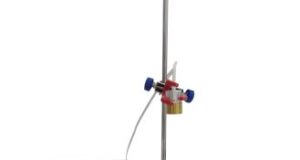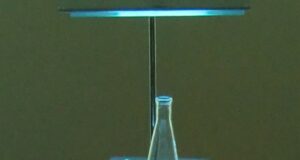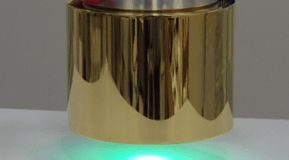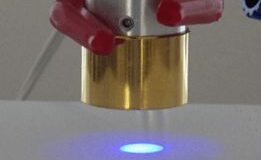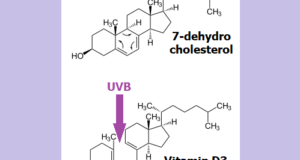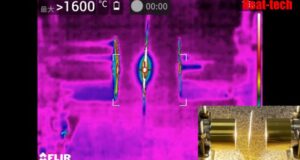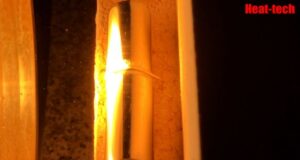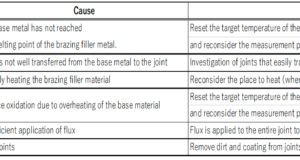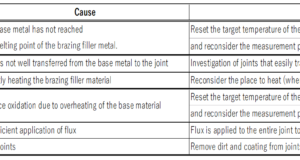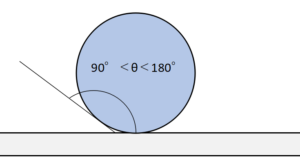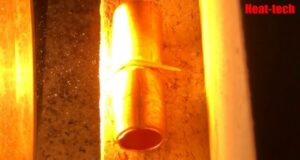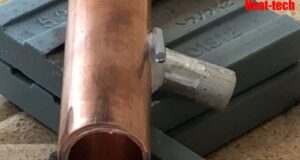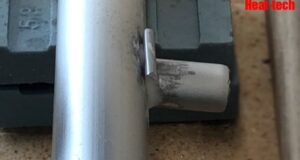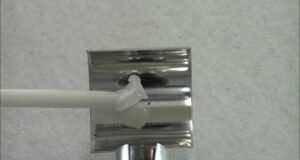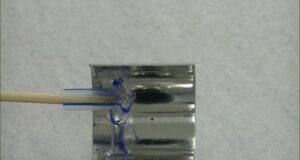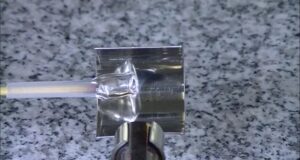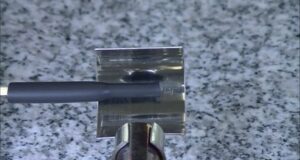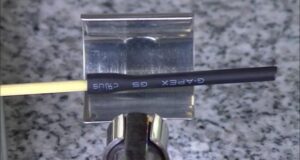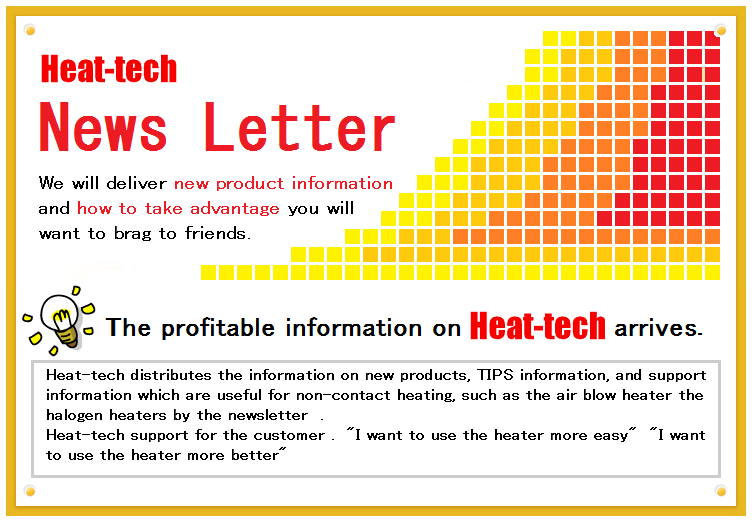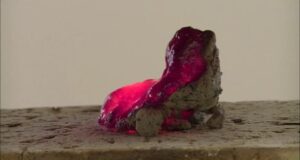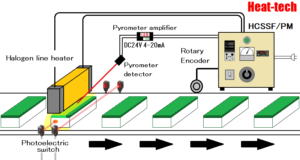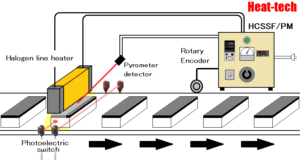Focal sizeΦ13 Easily UV point irradiation! ◆ Feature ◆ Since it is a kit, user can easily use the UV irradiation device. UV irradiation of 375 nm is possible. UV irradiation of Φ13 can be easily reproduced. The manual variable power supply ...
Read More »UV Ray line type Irradiator Lab Kit LKUVL-115
Easy UV irradiation! ◆ Features◆ 1). Since it is a kit, user can easily irradiate UV rays. 2). Built-in amplifier makes lighting operation easy. 3). Irradiate 253.7 nm, which has a high sterilization effect, with a large output of 8 ...
Read More »UV point type irradiator UVP-60 series
1.Features of UVP-60 1) UV-C 253.7nm irradiation is possible. 2) UVP-60 is compact and can irradiate a point of φ12 with UV rays. UVP-60 is an ultraviolet point type irradiator that points the light of an ultraviolet lamp with a ...
Read More »Compact UV point type irradiator UVP-30 series
1. Features of UVP-30 1) UVP-30 is compact and can irradiate a point of φ13 with UV rays. UVP-30 is an ultraviolet point type irradiator that points the light of an ultraviolet lamp with a condensing mirror. 2) User can ...
Read More »No.14 Synthesis of vitamin D by UV irradiation
[ Problem Point ] Poor health due to lack of vitamin D. [ ⇒Kaizen Point ] Exposure to ultraviolet rays (UV-B) with a wavelength of around 300 nm for about 10 minutes a day, Vitamin D was synthesized in the ...
Read More »Heating of Φ1mm Titanium Wire
This video is Demonstration of brazing of Aluminum with Halogen Point Heater. Please check the following site for more information.
Read More »Brazing of Stainless Steel Using Halogen Point Heater
This Video is Demonstration of Brazing of Stainless Steel with Halogen Point Heater. Please check the following site for more information.
Read More »Brazing with Halogen Point Heater
Brazing with Halogen Point Heater As with Air Blow Heater, information on brazing heating with halogen heaters is not very common, so this is an experiment to see to what extent brazing is possible. Overview of Halogen Point Heater Halogen ...
Read More »Brazing with Air Blow Heater
Brazing with Air Blow Heater There are many heating methods for brazing, and representative brazing methods include gas brazing, high-frequency induction brazing, resistance brazing, and arc brazing. Brazing with the Air Blow Heater is not very common, so we experimented ...
Read More »About Brazing
Brazing with Heater About Brazing Brazing with Air Blow Heater Brazing with Halogen Point Heater Brazing with Halogen Line Heater About Brazing Brazing is a welding method like soldering that joins metals together. In brazing, joining is possible without ...
Read More »Brazing of Copper Using Halogen Point Heater
This Video is Demonstration of Brazing of Copper with Halogen Point Heater. Please check the following site for more information.
Read More »Brazing of Aluminum Using Halogen Point Heater
This video is Demonstration of brazing of Aluminum with Halogen Point Heater. Please check the following site for more information.
Read More »Brazing of Aluminum and Copper Using Air Blow Heater
*Check Video is here This video is Demonstration of brazing of Aluminum and Copper with Air Blow Heater. Please check the following site for more information.
Read More »Brazing of Aluminum Using Air Blow Heater
*Check Video is here This video is Demonstration of brazing of Aluminum with Air Blow Heater. Please check the following site for more information.
Read More »Melting of Polypropylene with 5% biomass plastic addeds tube using Air Blow Heater
*Check Video is here This video is Demonstration of melting a Polypropylene with 5% biomass plastic added tube with a Air Blow Heater. Please check the following site for more information.
Read More »Melting of Polypropylenes tube using Air Blow Heater
*Check Video is here This video is Demonstration of melting a Polypropylene tube with a Air Blow Heater. Please check the following site for more information.
Read More »Melting of Polyethylenes tube using Air Blow Heater
*Check Video is here This video is Demonstration of melting a Polyethylene tube with a Air Blow Heater. Please check the following site for more information.
Read More »Shrinkage of Fluorinated Elastomers tube using Air Blow Heater
*Check Video is here This video is Demonstration of shrinking a Fluorinated Elastomer tube with a Air Blow Heater. Please check the following site for more information.
Read More »Shrinkage of polyolefins using Air Blow Heater
*Check Video is here This video is Demonstration of shrinking a polyolefin tube with a Air Blow Heater. Please check the following site for more information.
Read More »Heat-tech News Letter – Vol. 032
■□■━━━━━━━━━━━━━━━━━━━━━━━━━━━━━━■ □■ Heat-tech News Letter – Vol. 032 2022-07-15 □■ ■━━━━━━━━━━━━━━━━━━━━━━━━━━━━━━■□■ □ INDEX ■1. Guidance of the new product ■2. Guidance of new applications ■3. Movie Library ■4. Editor’s note ┏━━━━━━━━━━━━━━━━━━━━━━━━━━━━━━━━━┓ ■1. Guidance of the new product ┗━━━━━━━━━━━━━━━━━━━━━━━━━━━━━━━━━┛ ...
Read More »Heating. melting and vitrification of rocks series 52 – Melting of pumice from the eruption of a submarine volcano in Fukutoku-Okanoba. Ogasawara Islands Part 2
This video is a vitrification of Pumice stones of submarine volcanic eruption in Fukutoku-Okanoba, Ogasawara Islands, August 2021 by the Halogen Point Heater. Please check the following site for more information.
Read More »Heating. melting and vitrification of rocks series 51 – Melting of pumice from the eruption of a submarine volcano in Fukutoku-Okanoba. Ogasawara Islands Part 1
This video is a heating, melting and vitrification of Pumice stones of submarine volcanic eruption in Fukutoku-Okanoba, Ogasawara Islands, August 2021 by the Halogen Point Heater. Please check the following site for more information.
Read More »No.5 Drying the epoxy resin
[ Problem Point ] There was no heater controller that could heat intermittently Even when there was no work, the heater was operating and power was wasted. Also, when the line stopped, cracks occurred in the dry part. And when ...
Read More »No.4 Heating of rubber molded products
[ Problem Point ] There was no heater controller that could heat intermittently Even when there was no work, the heater was operating and power was wasted. Also, when the line stopped, the heated part became defective. And when it ...
Read More »No.3 Preheating rubber molded products
[ Problem Point ] When the line stopped, the heated part became defective. And when it was restarted, there were cases where unprocessed products were generated due to forgetting to turn on the switch. Also, even when there was no ...
Read More » HEAT-TECH Best Technology Online Shop
HEAT-TECH Best Technology Online Shop 
